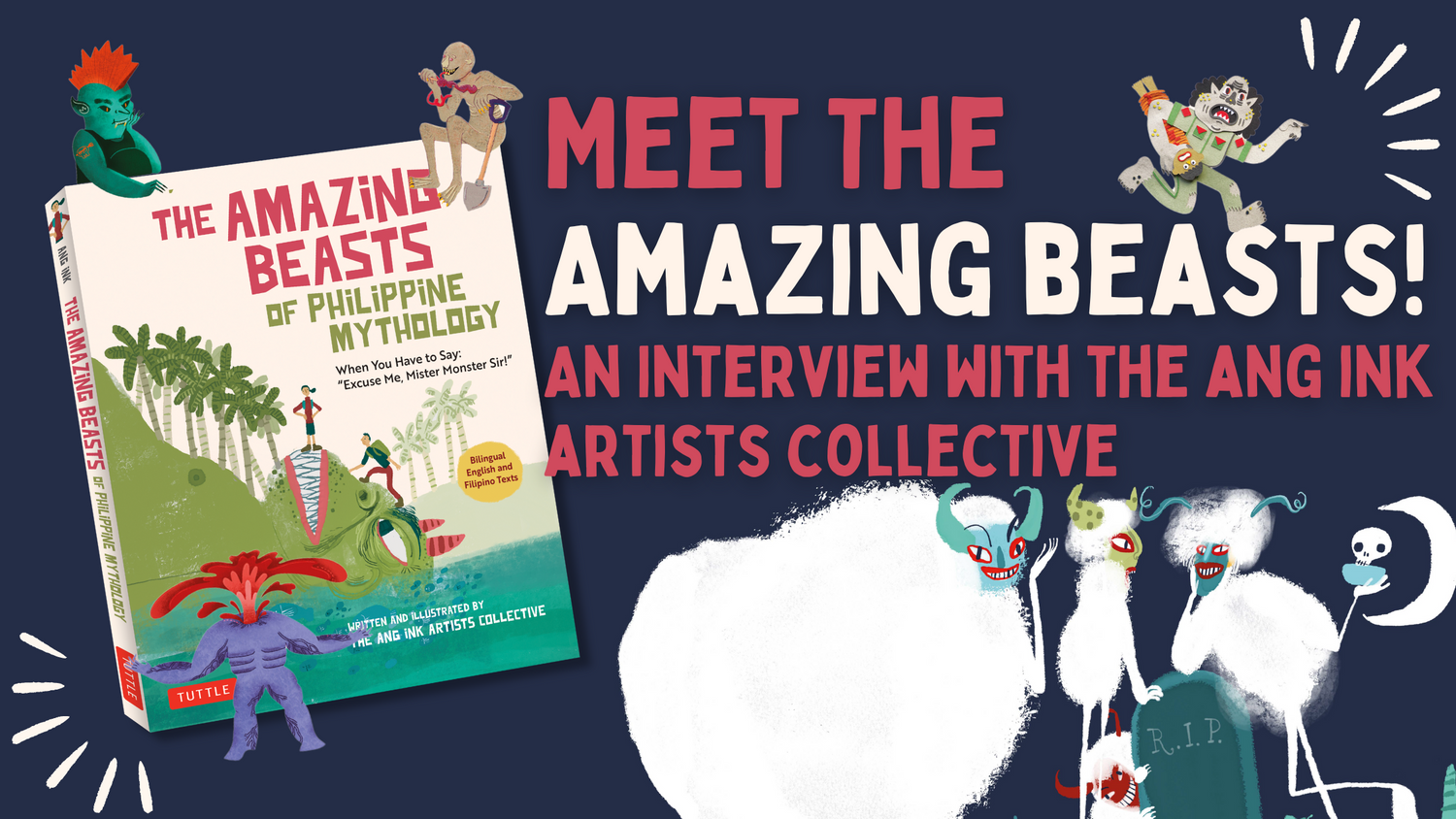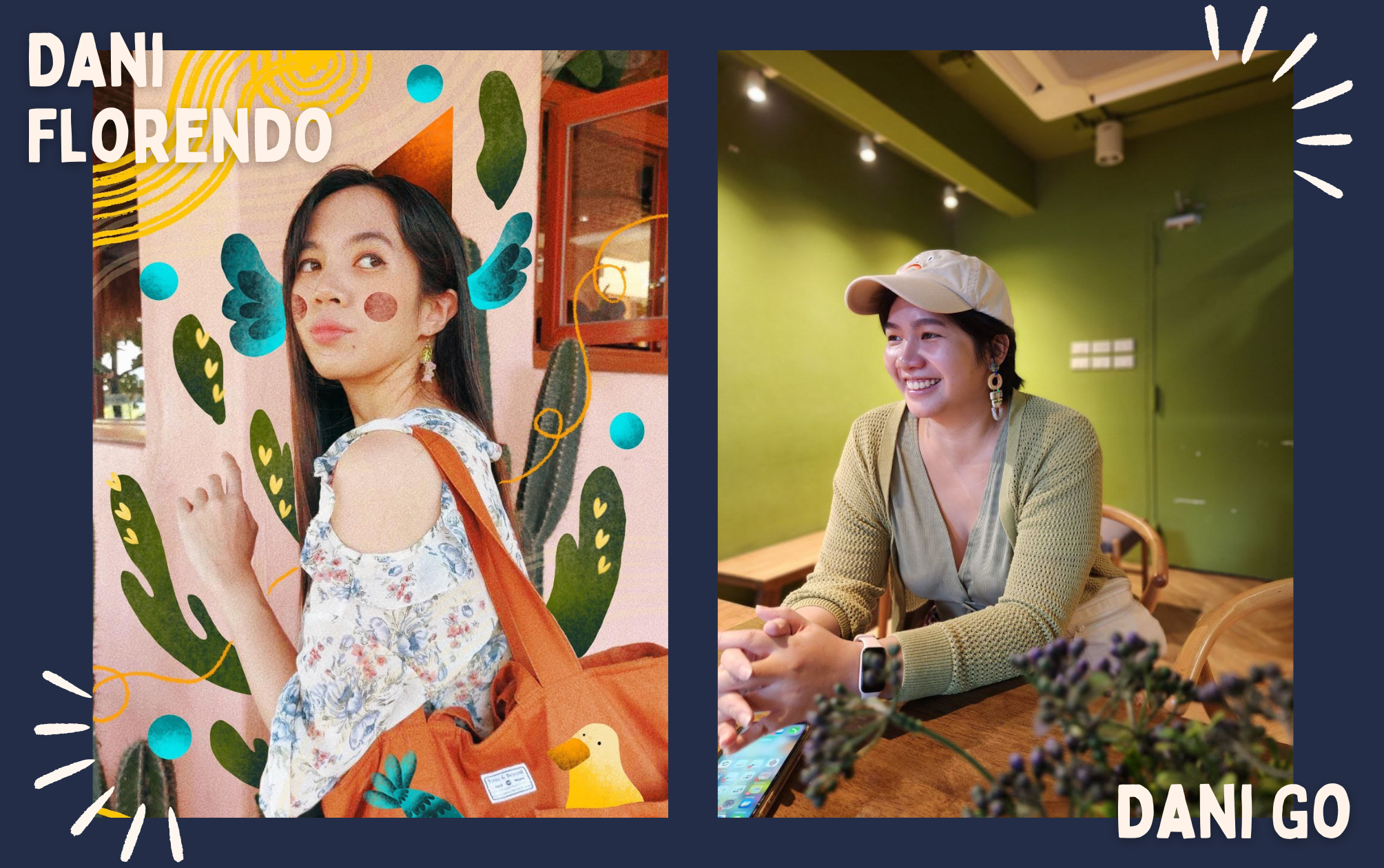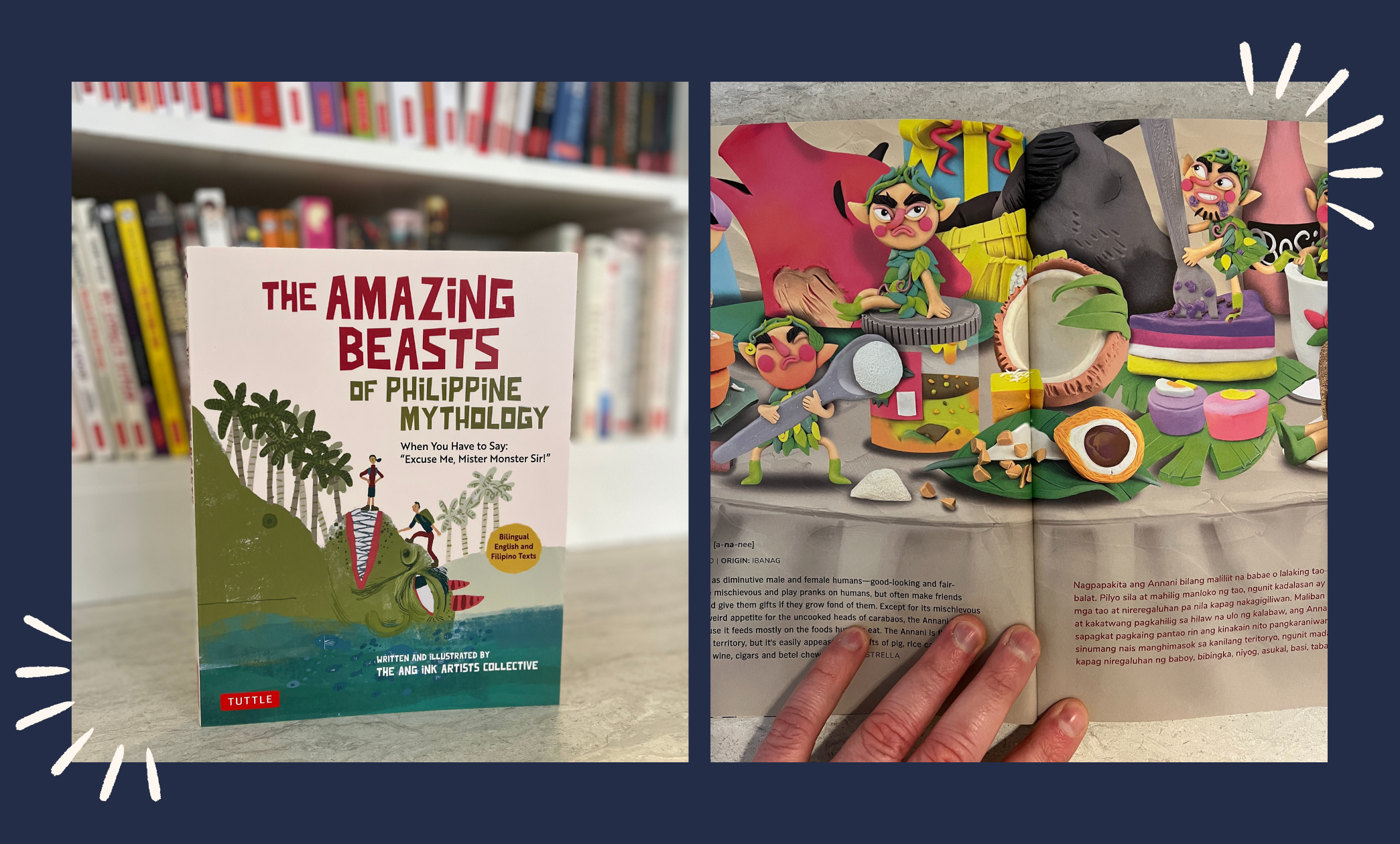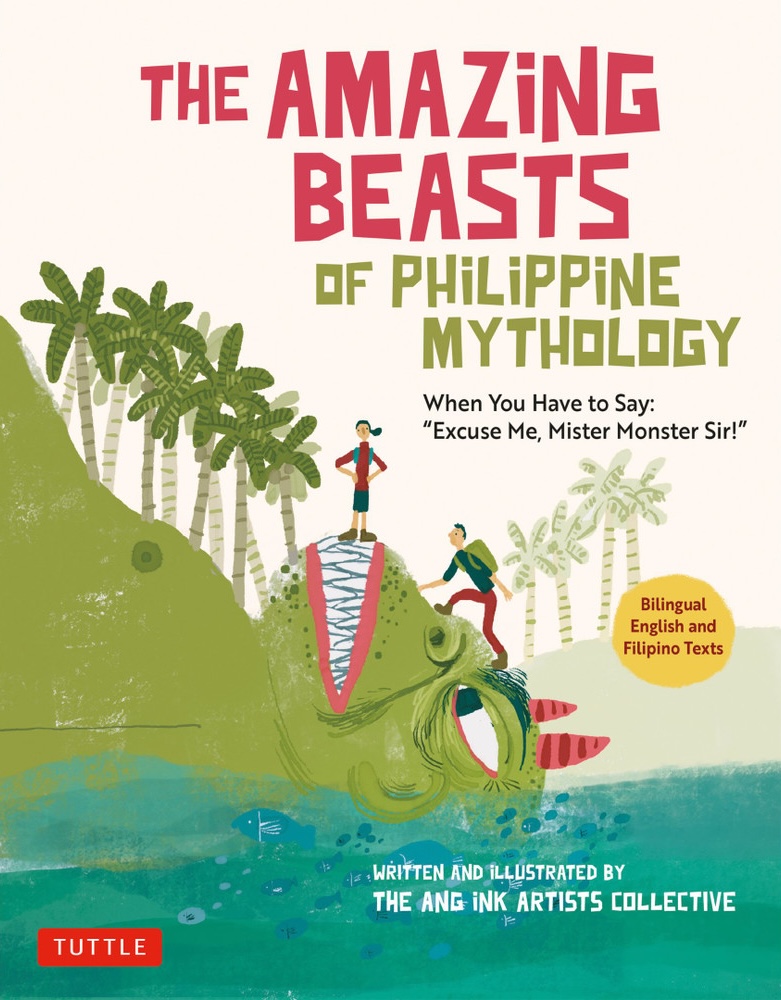One of our most exciting spring releases is The Amazing Beasts of Philippine Mythology — written and illustrated by the Ang Ink Artists Collective, a group of Asia's leading children's book illustrators. Today we are interviewing two members of the Collective, both named Dani: Dani Florendo and Dani Go!
Congratulations on the recent release of The Amazing Beasts of Philippine Mythology! This book really is a stunning showcase of artistry from all of the illustrators involved in the Ang Ink Artist’s Collective — plus it’s just so informative and fun to read! Can you start by telling us a little bit about yourselves, and about the Collective?
DF: Hi! I’m Dani Florendo. I am illustrator from Baguio City.
DG: I’m Dani Go, a Filipino-Chinese illustrator based in Manila.
And we’re illustrators from Ang Ilustrador ng Kabataan. Ang INK or Ang Ilustrador ng Kabataan is an organization of illustrators from the Philippines that advocates for the promotion of children's book and media illustration. We have been around for more than 30 years and still actively pursue our advocacy and work today.
Tell us about how this book came together, from the initial concept of the book to bringing all the illustrations and descriptions to life.
The book is actually a refresh of a project from 2009 that Ang INK worked on with a similar concept, It was called “Mga Tambay sa Tabi-Tabi: Creatures of Philippine Folklore." It started as an Ang INK exhibition of original artwork, which was eventually compiled and published. Like with this new book, each illustrator focused on a unique mythological creature and some of those same creatures that were in that book have been reinterpreted for this book. The main differences being that the creature catalog wasn’t as dense and it did not categorize them into types.
The book is a compendium of mythical creatures, from demons and dragons to ogres and vampires, and more! What are some of your favorite creatures, and why?
DF: Definitely the Berocca is still my favorite. I grew up with the concept of the “mu-mu” or an umbrella term for a scary monster. My teachers would tell me it’s a woman cut in half that eats unborn fetuses and punishes naughty children. I found out later that the image of said creature was the “manananggal." This entire project however taught me that with every different community and Indigenous group, we have our own version of the creature. I also have Ilocano blood so to find out my own community has its own version made me ecstatic...or horrified? I think this creature is the closest to what my teachers were talking about. Plus I was a picky and naughty eater so it made sense!
DG: I think one of the monsters I illustrated was interesting. It’s called the Mameleu and it’s a sea dragon with giant horns, glowing eyes and a tongue with hair-like spines! It sounds like our ancestors had an amazing imagination. Another notable one that I was terrified of as a kid (and even as an adult) is the Tiyanak, a demonic entity that masks itself as an orphaned baby to gain sympathy from its prey.
We love that the monsters range from cute and silly to creepy and disgusting! What kind of readers would most enjoy this book, and what do you hope they get out of it?
We think middle grade kids would really enjoy this. That’s the point in a child’s development when they start to geek out a lot about a multitude of things and are eager to dive into illustrated compendiums, anthologies, encyclopedias, and the like. You just want to see a lot of different things in one book and you get that with this book! The styles, stories, origins and creature types are so varied!
It’s also for the kids at heart. Those who remember growing up with the stories of these amazing beasts of the archipelago will definitely love to see them illustrated in imaginative, comical, modern and cute ways. Beware of this creepy parade of creatures!
DG: I hope that kids get inspired to look more into Philippine culture and create more stories using characters and creatures from our history and our mythology. I think that when I was growing up, the media around it wasn’t as developed and accessible, so a lot of my earlier influences were from American or Japanese books and comics. There wasn’t a lot of interest yet in creating books and comics around these topics, but today’s kids are lucky to have so many creators who can respect and refresh the source material!
Can you speak to the importance of including the bilingual text in each description, and how that can help with Tagalog language learning?
It’s kind of the norm for most of our local children’s books to include both languages at this point. I think they understand that bridging that gap between the languages will help kids here learn english and vice versa.
Not all of us grew up owning and reading a lot of the local children’s books. I imagine it works like any subject that a child finds themselves interested in. When they seek out content and realize that language will heighten their understanding of something, it makes learning much easier.
We remember that kids see books as companions and teachers as well, hence including the Tagalog language is to also promote speaking the national language among all Filipino children, whether they are based here or abroad!
At Tuttle we are huge fans of Philippine mythology in general, and it seems like there’s an almost endless array of stories and creatures to explore. Are there any other myths or legends that you hoped to include in the book but were unable to?
DG: I think this book has so much more than I would have ever managed to learn about on my own! I’m sure that different regions and tribes would have their own versions and descriptions for these creatures and it would be interesting to compare their distinctions. If I was to add other creatures, I would hope we had some form of “mandrake” creature that releases a deafening cry when it’s pulled out of the ground incorrectly. A demon ampalaya would be amazing.
DF: I would definitely like to explore the hierarchy of certain creature groups. I envision it more like a video game with their stats and what type they are. There are still numerous undocumented creatures from the farther communities in the country. I’m happy we at least have this documented so far so hopefully there will be more research to bring these creepy creatures out of the shadows and into the light.
A lot of Western readers might not be familiar with these Filipino myths. What would you like them to learn about Filipino culture through the illustrations and stories in the book?
DG: First and foremost, to appreciate the talent and the artistry that comes from here! Ang INK has been around for more than 30 years and only now have some of our members’ work been recognized by foreign countries and audiences. That means these stories are relevant and can connect to people of other cultures as well! I want more people to know how creative this country and its people are, and re-telling our myths and legends is a way of showing that.
DF: Our creatures are also reflections of our past. Major events like droughts, floods, harvest, and war that our country witnessed birthed these creatures. They usually become the reason for said events: be they evildoers or saviors. With that we get to learn more about us and how our country became what it is today.
Thanks so much for your thoughtful and insightful answers! Can you tell us about any upcoming projects that you and the Ang Ink Artists Collective are working on?
We are looking forward to our annual exhibition that will be happening in the latter part of the year at the Ayala Museum. Ang INK always plans a yearly exhibition and supports its members through participation in various art markets and organization-initiated workshops.
We are working on organizing another INK fest, a mini fair that showcases the INKie’s talents through lectures, workshops, shows and mini markets. Stay tuned on our socials and website to get updated on these upcoming events!
Lastly, we just opened membership applications for 2024, so if you are from the Philippines or a Filipino with a passion for illustration and anything Kidlit or media, we encourage you to join our community!
As far as book projects go, we’re hoping that if the book gets traction, we could develop a second book with a new set of creatures and showcase the talents and imaginations of other INKies. Maybe explore other compilations and compendiums of Philippine culture, like profiles on the different islands and provinces, endemic flora and fauna, historical personas, and much more!
Meet the creepy creatures and amazing beasts from Philippine mythology!
Monsters and magical creatures spring vividly to life on every page of this book thanks to the exceptional artistic talents of some of Asia's leading children's book illustrators.




